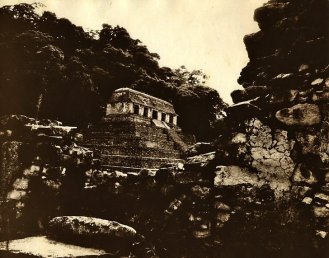a travel guide is a tourist’s bible
Before I left, I looked at media representing Mexico–especially media directed toward foreigners and/or tourists. These are some travel books I found, and I think each depicts a specific type of “tourist gaze”…
1. Mexico Chic  This travel book represents the luxury gaze. Like Ury and Larsen theorize, the tourists’ gaze depends on his or her own sociocultural ‘centre’–their culture, language, beliefs, daily routine & practices, economic, racial, and social status. This book caters to the contemporary American fashionable female. The implied reader’s lifestyle is heavily influenced by visual and sensual pleasure. The book presents Mexico as an oasis that is isolated from a daily routine of work, offices, and suburban/urban landscapes. It entices via large, colorful photographs of hacienda suites, resorts, spas, and fine dining– all with an “authentic” Mexican flair. Tag-lined with the phrased “you can’t get it at home”, the tourist is lured into an ideal of escapism. Mexico is only partially depicted, as a place void of actual people with actual jobs and actual lives, etc.
This travel book represents the luxury gaze. Like Ury and Larsen theorize, the tourists’ gaze depends on his or her own sociocultural ‘centre’–their culture, language, beliefs, daily routine & practices, economic, racial, and social status. This book caters to the contemporary American fashionable female. The implied reader’s lifestyle is heavily influenced by visual and sensual pleasure. The book presents Mexico as an oasis that is isolated from a daily routine of work, offices, and suburban/urban landscapes. It entices via large, colorful photographs of hacienda suites, resorts, spas, and fine dining– all with an “authentic” Mexican flair. Tag-lined with the phrased “you can’t get it at home”, the tourist is lured into an ideal of escapism. Mexico is only partially depicted, as a place void of actual people with actual jobs and actual lives, etc.
2. Graham Greene‘s Another Mexico
 This book offers an historical viewpoint of Mexico: a mix of travel writing, social critique, and religious protest written in the 1930’s. After converting to Catholicism, Greene traveled to Mexico and explored the religious landscape. He described Catholics as a suppressed people, ignoring the history of Spanish colonialism and imperialism. Mayan culture was significantly changed by the infiltration of Catholic Spaniards, prompting Mayan religion to take on aspects of Christianity. This syncratic practice is a key notion in the study of Mexican culture.
This book offers an historical viewpoint of Mexico: a mix of travel writing, social critique, and religious protest written in the 1930’s. After converting to Catholicism, Greene traveled to Mexico and explored the religious landscape. He described Catholics as a suppressed people, ignoring the history of Spanish colonialism and imperialism. Mayan culture was significantly changed by the infiltration of Catholic Spaniards, prompting Mayan religion to take on aspects of Christianity. This syncratic practice is a key notion in the study of Mexican culture.
3. An Archaeological Guide to Mexico and the Yucatan Peninsula, by Kelly Joyce
This book approaches tourism through a scholar’s lens, offering the tourist a how-to guide on a more academically grounded, therefore ‘authentic’, experience. The book emphasizes visually compelling aspects of the Yucatan as an anthropological and archaeological field, and invites the reader into an insider perspective on Mexican culture. Tourism scholars could criticise this book for perpetuating staged authenticity, as the sites listed are all run somewhat like cultural theme parks. The scholarly authority imparted by the voice in the book seems verified and objective, which could be dangerous for a tourist audience.
4. Lonely Planet: Cancun, Cozumel, and Yucatan
This is what I would consider a “classic” travel guide. Lonely Planet produces hundreds of guides for destinations all over the globe. The information is a survey of the Peninsula’s hotels, restaurants, museums, beaches, and cultural sites. The design has a visual and photographic emphasis, once again, with historical/cultural information in captions. The book is a self-described authority on “how to get there and get away”, and the place is presented as exotic, foreign, and other-worldly. The American tourist is instructed to see difference primarily, and there is not much about the people who inhabit Mexico today–perpetuating voyeuristic pleasure.





